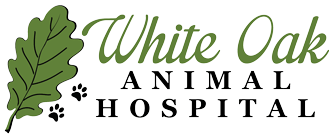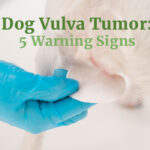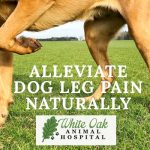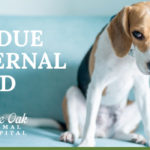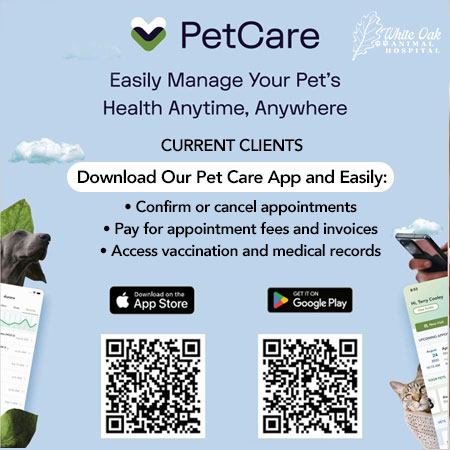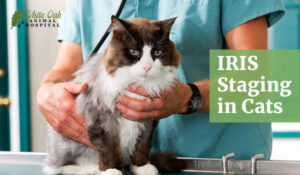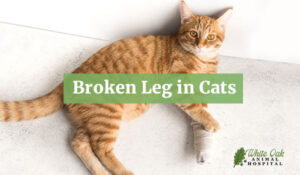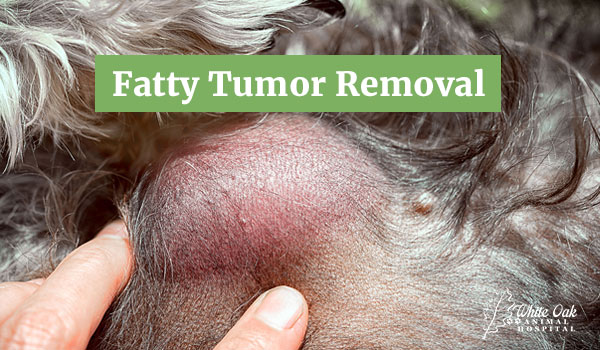
Fatty tumors, also known as lipomas, are common benign growths in dogs that can develop as they age. While these tumors are typically harmless, they can grow large enough to cause discomfort or restrict movement, making dog fatty tumor removal a necessary procedure in some cases. Successfully removing these tumors is crucial for maintaining your dog’s quality of life and preventing potential complications. This article will guide you through essential tips to ensure a successful dog fatty tumor removal process, from preparation to post-surgery care.
Understanding Dog Fatty Tumors
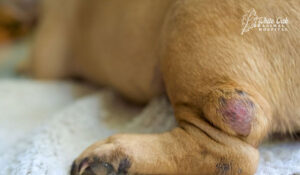 Dog fatty tumors are soft, non-cancerous lumps that form under the skin. They are composed of fat cells and are most commonly found in older dogs, though they can occur at any age. These tumors can appear anywhere on a dog’s body but are most frequently found on the chest, abdomen, and limbs. While dog fatty tumors are usually painless, their size and location can sometimes interfere with a dog’s mobility or comfort, making dog fatty tumor removal necessary.
Dog fatty tumors are soft, non-cancerous lumps that form under the skin. They are composed of fat cells and are most commonly found in older dogs, though they can occur at any age. These tumors can appear anywhere on a dog’s body but are most frequently found on the chest, abdomen, and limbs. While dog fatty tumors are usually painless, their size and location can sometimes interfere with a dog’s mobility or comfort, making dog fatty tumor removal necessary.
Understanding the nature of dog fatty tumors is the first step in deciding on the best course of action. Regular veterinary check-ups are essential for monitoring these growths, as early detection and diagnosis can significantly improve the outcomes of dog fatty tumor removal. Your veterinarian can determine whether the tumor poses a risk and recommend appropriate treatment options based on its size, location, and impact on your dog’s health.
The Importance of Preparation
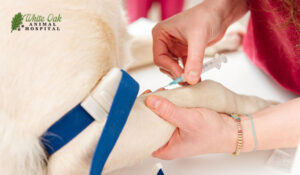 Preparation is key to ensuring a successful dog fatty tumor removal. Proper pre-surgery preparation helps minimize risks and ensures that your dog is in the best possible condition for the procedure. This includes conducting a thorough health assessment, which may involve blood tests, imaging, and other diagnostics to evaluate your dog’s overall health and readiness for surgery. Ensuring that your dog is up-to-date on vaccinations and is free from any infections is also crucial.
Preparation is key to ensuring a successful dog fatty tumor removal. Proper pre-surgery preparation helps minimize risks and ensures that your dog is in the best possible condition for the procedure. This includes conducting a thorough health assessment, which may involve blood tests, imaging, and other diagnostics to evaluate your dog’s overall health and readiness for surgery. Ensuring that your dog is up-to-date on vaccinations and is free from any infections is also crucial.
In addition to medical preparations, it’s important to consider your dog’s emotional well-being. Reducing stress before surgery can lead to a smoother recovery. You can do this by maintaining a calm environment and adhering to a consistent routine in the days leading up to the procedure. Providing your dog with a comfortable, familiar space to rest will also help them feel secure during this time. Proper preparation not only contributes to a successful dog fatty tumor removal but also sets the stage for a faster and more comfortable recovery.
5 Essential Tips for Dog Fatty Tumor Removal Success
Tip 1: Choosing the Right Veterinarian
Selecting the right veterinarian is crucial for a successful dog fatty tumor removal. The procedure’s outcome heavily depends on the expertise and experience of the veterinarian performing it. When searching for the right professional, consider their qualifications, experience in performing dog fatty tumor removals, and their approach to pre-and post-operative care. It’s also beneficial to seek a veterinarian who practices integrative medicine, as they can offer a combination of conventional and holistic treatments to ensure comprehensive care for your dog. Consultation with a reputable veterinarian can give you confidence that your dog is in capable hands.
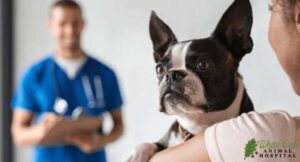 Tip 2: Early Detection and Diagnosis
Tip 2: Early Detection and Diagnosis
Early detection and diagnosis are vital for effective dog fatty tumor removal. The earlier a fatty tumor is identified, the easier it is to manage and remove. Regular veterinary check-ups are essential for monitoring your dog’s health and detecting any new lumps or changes in existing ones. Screening methods such as fine needle aspiration or biopsy can help determine whether a tumor is benign or malignant, guiding the treatment plan. By catching a fatty tumor early, you can avoid complications and ensure a more straightforward and successful removal process.
Tip 3: Nutrition and Exercise
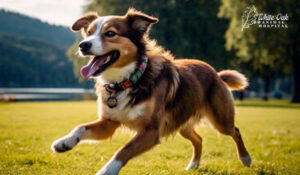 Nutrition and exercise play a significant role in the development and management of dog fatty tumors. A balanced diet rich in antioxidants, omega-3 fatty acids, and other essential nutrients can support your dog’s immune system and reduce the likelihood of tumor growth. Regular exercise helps maintain a healthy weight, which is important because obesity can increase the risk of fatty tumors. Implementing dietary changes and ensuring your dog gets regular physical activity can contribute to the prevention of fatty tumors and improve overall health, making the dog’s fatty tumor removal process smoother if it becomes necessary.
Nutrition and exercise play a significant role in the development and management of dog fatty tumors. A balanced diet rich in antioxidants, omega-3 fatty acids, and other essential nutrients can support your dog’s immune system and reduce the likelihood of tumor growth. Regular exercise helps maintain a healthy weight, which is important because obesity can increase the risk of fatty tumors. Implementing dietary changes and ensuring your dog gets regular physical activity can contribute to the prevention of fatty tumors and improve overall health, making the dog’s fatty tumor removal process smoother if it becomes necessary.
Tip 4: Understanding the Procedure
Understanding the dog fatty tumor removal procedure is important for setting realistic expectations and preparing adequately. The procedure typically involves the surgical excision of the tumor under general anesthesia. Your veterinarian will remove the tumor along with a margin of healthy tissue to ensure complete removal and prevent recurrence. Knowing what to expect before, during, and after the surgery can help you prepare both mentally and physically. Recovery usually involves rest, monitoring the surgical site for signs of infection, and following your veterinarian’s instructions for wound care. Understanding the procedure will help you provide the best care for your dog during the recovery process.
Tip 5: Post-Surgery Care and Monitoring
Post-surgery care is critical for ensuring a successful recovery after dog fatty tumor removal. Proper care includes monitoring the surgical site for any signs of infection, such as redness, swelling, or discharge, and ensuring that your dog does not lick or scratch the area. Your veterinarian may prescribe pain relief or antibiotics to prevent infection and manage discomfort. Additionally, keeping your dog calm and restricting physical activity during the recovery period is essential to allow the incision to heal properly. Regular follow-up visits with your veterinarian will ensure that your dog is healing well and help catch any potential complications early.
 Successful dog fatty tumor removal requires careful preparation, expert veterinary care, and diligent post-operative monitoring. By following these essential tips, you can help ensure that your dog experiences a smooth and comfortable recovery. At White Oak Animal Hospital, we offer integrative options not available elsewhere, including TCVM Telemedicine consultations, to provide comprehensive care tailored to your dog’s needs. With over 28 years of experience, our team is committed to delivering the highest standard of care for your pet’s health and well-being. We encourage you to schedule a consultation with us to discuss how we can support your dog’s health and guide you through the process of dog fatty tumor removal.
Successful dog fatty tumor removal requires careful preparation, expert veterinary care, and diligent post-operative monitoring. By following these essential tips, you can help ensure that your dog experiences a smooth and comfortable recovery. At White Oak Animal Hospital, we offer integrative options not available elsewhere, including TCVM Telemedicine consultations, to provide comprehensive care tailored to your dog’s needs. With over 28 years of experience, our team is committed to delivering the highest standard of care for your pet’s health and well-being. We encourage you to schedule a consultation with us to discuss how we can support your dog’s health and guide you through the process of dog fatty tumor removal.
Frequently Asked Questions About Dog Fatty Tumor Removal
How can I tell if my dog’s fatty tumor needs to be removed?
Not all fatty tumors require removal. A veterinarian will assess the size, location, and impact of the tumor on your dog’s health to determine if removal is necessary. If the tumor is causing discomfort, restricting movement, or growing rapidly, removal may be recommended.
Is dog fatty tumor removal a risky procedure?
Dog fatty tumor removal is generally considered a low-risk procedure, especially when performed by an experienced veterinarian. However, as with any surgery, there are potential risks, including infection, bleeding, or complications from anesthesia. Your veterinarian will discuss these risks with you before the procedure.
What is the recovery time for dog fatty tumor removal?
The recovery time for dog fatty tumor removal typically ranges from one to two weeks, depending on the size and location of the tumor and your dog’s overall health. During this time, it’s important to follow your veterinarian’s post-operative care instructions to ensure a smooth recovery.
Can fatty tumors in dogs recur after removal?
While dog fatty tumors can recur, the likelihood of recurrence can be minimized by ensuring complete removal during surgery. Regular veterinary check-ups are important for monitoring your dog’s health and detecting any new growths early.
Related Posts
-
Devastating Dog Vulva Tumor: 5 Warning Signs Every Pet Owner Must Know
Dog vulva tumors are a concerning health issue that many pet owners may not be…
-
Benefits Of Natural Herbs For Dog Dandruff
Does your pup have dog dandruff? Additionally, they may also have: Occasional dry, lusterless coat…
-
Learn How To Alleviate Dog Leg Pain Naturally
Dog arthritis is the top cause of chronic dog leg pain. Arthritis affects approximately 20%…
-
Learn How to Alleviate Dog Tremors Naturally
Dog tremors are sometimes mistaken for dog seizures. Consult your veterinarian to confirm whether your…
